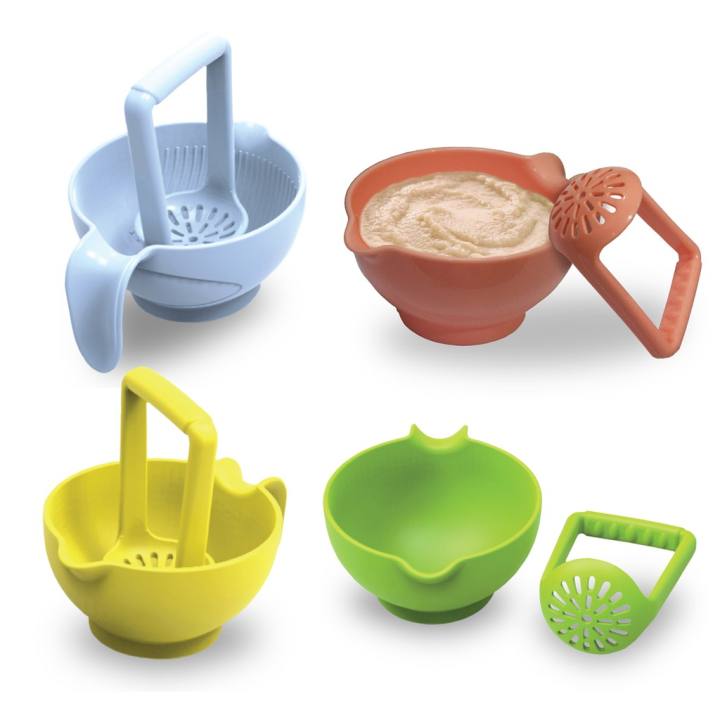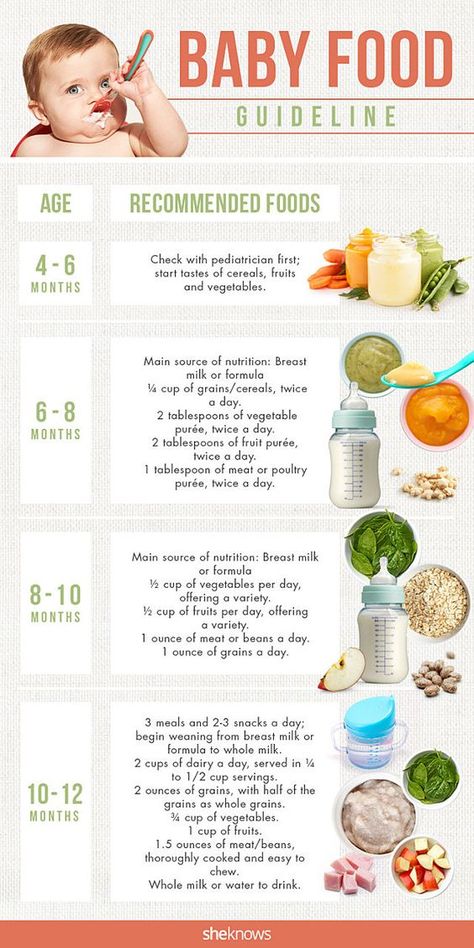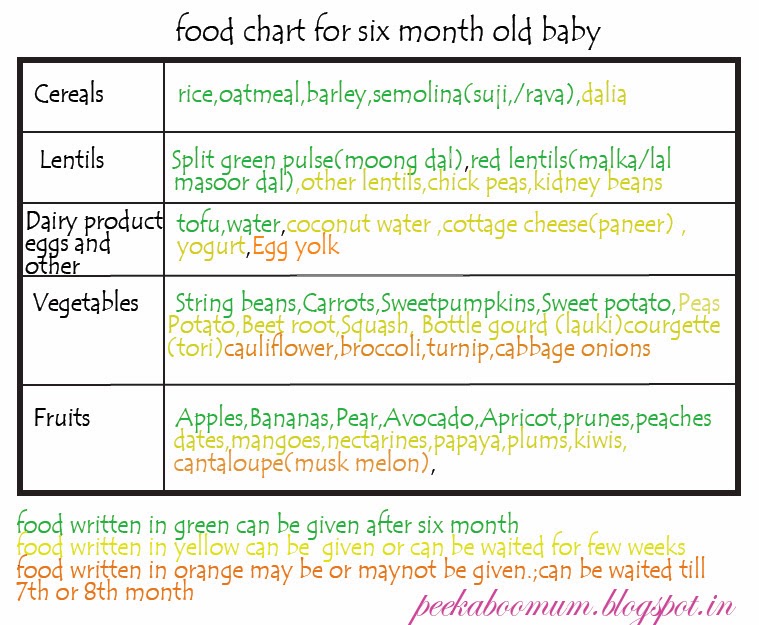Baby feeding measurements
Bottle-Feeding (Formula) Questions
Is this your child's symptom?
- Formula and bottle-feeding questions
Topics Covered for Formula Feeding
If your baby is healthy, skip the "What to Do" section. Go directly to the topic number that relates to your question for advice:
- Types of formulas
- Switching formulas and milk allergies
- Powdered versus liquid formulas
- Whole cow's milk, 2%, 1% and skim milk
- Vitamins and iron
- Water to mix with the formula
- Extra water
- Amounts: how much per feeding?
- Schedules or frequency of feedings
- Length of feedings
- Night feedings: how to eliminate?
- Formula temperature
- Formula storage
- Cereals and other solids
- Burping
- Baby bottle tooth decay
- Traveling
- Nipples and bottles
- Normal stools
- Breast discomfort
When to Call for Bottle-Feeding (Formula) Questions
Call 911 Now
- Can't wake up
- Not moving or very weak
- You think your child has a life-threatening emergency
Call Doctor or Seek Care Now
- Age less than 1 month old and looks or acts abnormal in any way
- Dehydration suspected.
No urine in more than 8 hours, dark urine, very dry mouth and no tears.
- Will not drink or drinks very little for more than 8 hours
- Fever in baby less than 12 weeks old. Caution: do NOT give your baby any fever medicine before being seen.
- Your child looks or acts very sick
- You think your child needs to be seen, and the problem is urgent
Contact Doctor Within 24 Hours
- Does not seem to be gaining enough weight
- You think your child needs to be seen, but the problem is not urgent
Contact Doctor During Office Hours
- You have other questions or concerns
Self Care at Home
- Bottle-feeding question about a healthy baby
Seattle Children's Urgent Care Locations
If your child’s illness or injury is life-threatening, call 911.
- Bellevue
- Everett
- Federal Way
- Seattle
Care Advice for Bottle (Formula) Feeding
- Types of Formulas:
- Milk-protein formulas, soy-protein formulas, and hydrolysate formulas
- Soy formulas don't contain lactose or cow's milk protein.
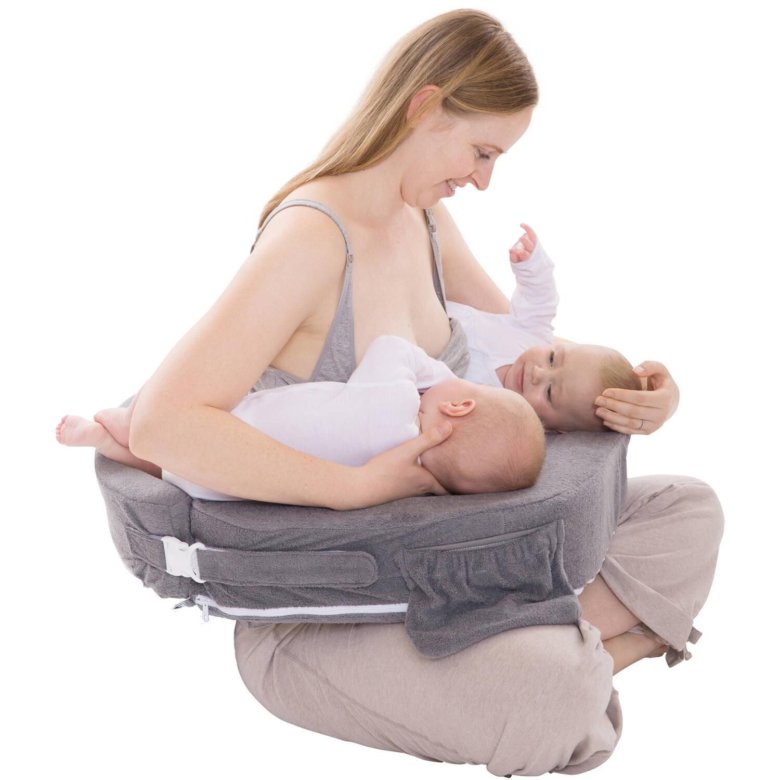 Currently, 20% of infants in the U.S. are fed soy formula. Often, switching to soy is not done with a valid reason.
Currently, 20% of infants in the U.S. are fed soy formula. Often, switching to soy is not done with a valid reason. - Hydrolysate formulas mean the protein is broken down. These are advised when children are sensitive to both soy and milk protein.
- Switching Formulas and Milk Allergies:
- Switching from one milk-based formula to another is not helpful for any symptom. It is also not harmful.
- Switching from milk formula to soy formula is sometimes helpful for severe diarrhea. This may occur from temporary low lactase levels. It may also be used for those families who are vegetarian.
- Switching from milk formula to soy is sometimes helpful for cow's milk allergy. A cow's milk allergy occurs in 1-2% of infants. Most often, protein hydrolysate formulas (such as Alimentum) are advised. This is because 15% of these infants are also allergic to soy protein.
- Switching formulas for frequent crying, spitting up or gas is rarely helpful.
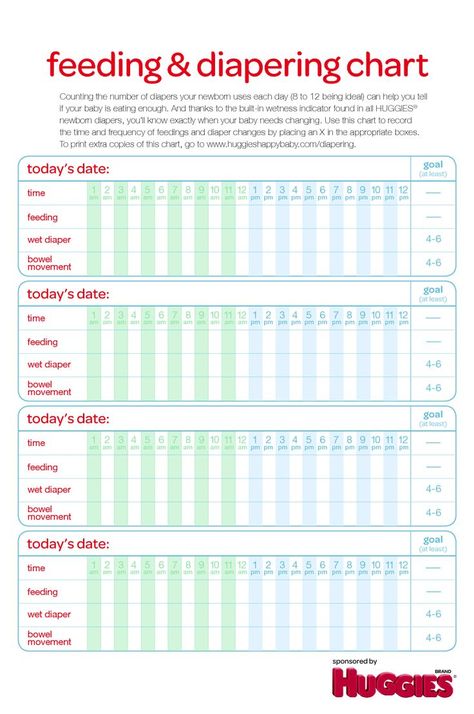
- Don't switch formulas without talking with your child's doctor.
- Powdered versus Liquid Formulas:
- Formulas come in 3 forms: powder, concentrated liquid and ready-to-feed liquid.
- Concentrated formulas are mixed 1:1 with water.
- Ready-to-feed formulas do not need any added water.
- Powdered formulas are mixed 2 ounces (60 mL) of water per each level scoop of powder. Never add extra water because dilute formula can cause a seizure.
- Powdered formula costs the least. Ready-to-feed formula costs the most.
- Powdered formula is the easiest to use to supplement breastfeeding.
- Ready-to-feed formula is the easiest to use for traveling.
- Whole Cow's Milk, 1%, 2% and Skim Milk:
- Cow's milk should not be given to babies before 12 months of age. Reason: raises risk of iron deficiency anemia.
- Skim milk (fat free milk), 1% low fat milk or 2% milk should not be used before 2 years.
 Reason: the fat content of whole cow's milk (3.5%) is required. It is needed for rapid brain growth.
Reason: the fat content of whole cow's milk (3.5%) is required. It is needed for rapid brain growth.
- Vitamins and Iron:
- For all infants, use a formula that has iron in it. This helps to prevent iron deficiency anemia.
- The iron amount in iron-fortified formulas is too small to cause any symptoms. Iron in formulas does not cause constipation or diarrhea.
- Iron-fortified formulas contain all the vitamins and minerals needed.
- Extra vitamins are therefore not needed for infants taking formula.
- Fluoride. Babies no longer need to take fluoride drops. Reason: the fluoride in toothpaste works very well. For children at high risk for tooth decay, your dentist may use fluoride varnish.
- Water to Mix With the Formula:
- Most city water supplies are safe for making 1 bottle at a time. Run the cold tap water for 1 minute. Don't use warm tap water. Reason: to avoid potential lead exposure.
 Heat cold water to desired temperature. Add this to powder or formula concentrate.
Heat cold water to desired temperature. Add this to powder or formula concentrate. - Exceptions:
- Untested well water or
- City water with recent contamination or
- Developing countries with unsafe water supply or
- Your child has decreased immunity.
- For these conditions, use distilled water, bottled water, or filtered tap water.
- Another option is to use city water or well water that has been boiled. Boil for 10 minutes. Add 1 extra minute per each 1,000 feet (305 meters) of elevation.
- Bottled water costs more than distilled water.
- If making a batch of formula, distilled, bottled or boiled water is needed.
- Most city water supplies are safe for making 1 bottle at a time. Run the cold tap water for 1 minute. Don't use warm tap water. Reason: to avoid potential lead exposure.
- Extra Water:
- Babies less than 6 months of age should not be given any extra water. Reason: regular formula is 85% water. Also, water can cause harm at this age.
- Infants older than 6 months of age can have some extra water. Reason: water may be needed after starting solid foods or if weather is very hot.
 Safe at this age.
Safe at this age. - Limit water for infants age 6 to 12 months: don't give more than 4 ounces (120 mL) of extra water per day. On hot days, can give up to 8 ounces (240 mL) per day (AAP).
- Amounts - How Much Per Feeding: Newborn to 6 Months Old
- The average amount of formula that babies take per feeding is:
- Newborn: 1-2 ounces (30-60 mL) per feeding
- 1 month old: 3-4 ounces (90-120 mL) per feeding
- 2 months old: 5 ounces (150 mL) per feeding
- 4 months old: 6 ounces (180 mL) per feeding
- 6 months old: 7-8 ounces (210-240 mL) per feeding
- The amount can vary depending on the baby's weight and if the baby is going through a growth spurt.
- A baby's appetite varies throughout the day. If the infant stops feeding or loses interest, the feeding should be stopped.
- If healthy babies are not hungry at several feedings, increase the feeding interval.
- The most amount of formula advised per day is 32 ounces (1 liter).

- Over-feeding can cause vomiting, diarrhea or too much weight gain.
- If your baby needs over 32 ounces (1 liter), talk to your doctor about starting solids.
- Get rid of any formula left in bottle at end of each feeding. Do not reuse this leftover formula. Reason: contains germs that can grow.
- Frequency of Feedings (Schedules): Babies mainly need to be fed when they are hungry. If your baby is fussy and it's been more than 2 hours, feed him. Some guidelines are listed below:
- From birth to 3 months of age, feed every 2 to 3 hours.
- From 3 to 9 months of age, feed every 3 to 4 hours.
- Infants often set their own schedule by 1 to 2 months of age.
- Length of Feedings:
- Feedings shouldn't take more than 20 minutes.
- If the feeding is prolonged, check the nipple to be sure it isn't clogged.
- A clean nipple should drip about 1 drop per second. Check this when the bottle of formula is turned upside down.
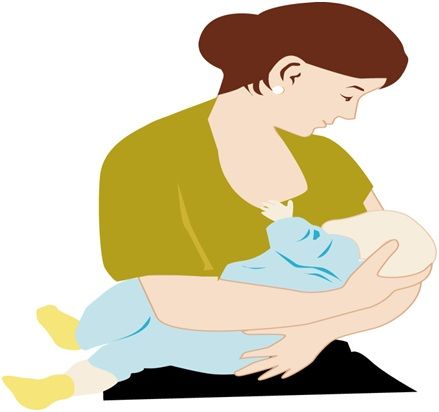
- Night Feedings - How to Get Rid of Them:
- Most newborns need to be fed at least twice each night.
- Most formula-fed babies give up night feedings by 4 months of age. The tips below can help your baby sleep for longer stretches during the night:
- Keep daytime feeding intervals to at least 2 hours. Slowly stretch them to 3 hours.
- During daytime, your baby shouldn't sleep for more than 3 hours at a time. If your baby naps longer than that, wake him for a feeding.
- Place your baby in the crib drowsy but awake. Don't bottle-feed or rock until asleep.
- Make middle-of-the-night feedings brief and boring compared to daytime feedings. Don't turn on the lights or talk to your child. Feed him rather quickly.
- Formula Temperature:
- Most babies like formula at body temperature.
- In the summertime, some infants prefer formula that's cooler.
- In the wintertime, some prefer warm formula.

- The best temperature is the one your infant prefers. Either way, there's no health risk involved.
- Just make sure the formula is not too hot. Reason: it can burn your baby's mouth.
- Formula Storage:
- If you can, make your child's formula fresh for each feed. However, if formula needs to be made ahead of time:
- Prepared formula should be stored in the refrigerator. It must be used within 24 hours.
- Open cans of formula should also be kept in the refrigerator. They should be covered and used within 24 hours.
- Prepared formula left at room temperature for more than 1 hour should be discarded.
- Leftover used formula should always be tossed. Reason: contains germs that can grow.
- Cereals and Other Solids:
- Bottle-fed infants should be started on baby foods around 6 months of age. First baby foods can be cereals and/or fruit.
- Starting before 6 months is not needed.
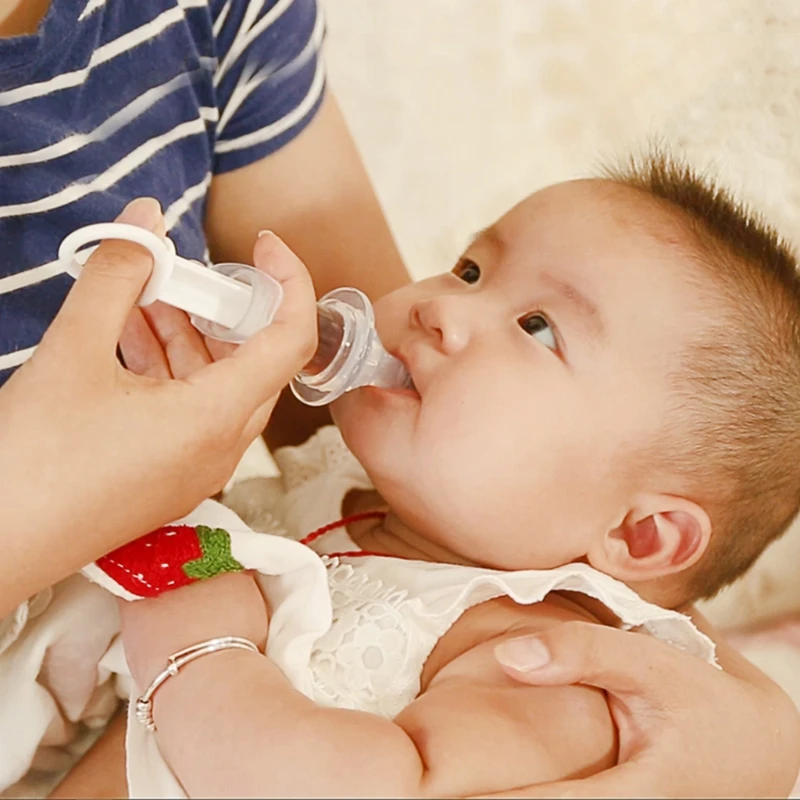 Starting before 6 months makes feedings messier and longer. Early use of solids can also cause gagging.
Starting before 6 months makes feedings messier and longer. Early use of solids can also cause gagging. - Solids don't increase sleeping through the night for bottle-fed infants.
- Delaying solids past 9 months of age is not advised. The delay runs the risk that your infant will refuse solids.
- Burping:
- It is not harmful if a baby doesn't burp.
- Burping is an option, but not required.
- It can decrease spitting up, but it doesn't lessen crying.
- Burping can be done twice per feeding, once midway and once at the end.
- If your baby does not burp after 1 minute of patting, it can be stopped.
- Baby Bottle Tooth Decay:
- Some older infants and toddlers are used to a bottle before sleeping.
- Falling asleep with a bottle of milk or juice can cause severe tooth decay.
- Prevent this bad habit by not using the bottle as a pacifier. Also, do not use the bottle as a security object.
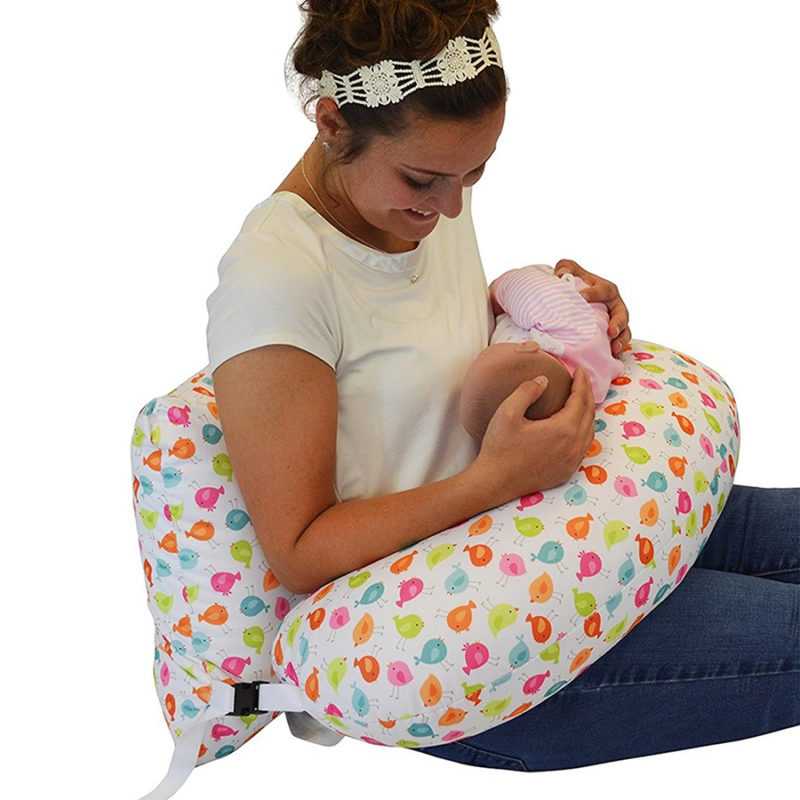
- If you cannot stop the bottles, fill it with water. Use water instead of formula or milk at bedtime.
- Traveling:
- Use bottles of ready-to-feed formula (most expensive).
- Or mix formula ahead of travel and carry in a cold insulated container.
- Or use powered formula. Put the required number of scoops in a bottle. Carry clean water in a separate bottle. Mix before each feeding.
- Nipples and Bottles:
- Any nipple/bottle products are fine.
- It is not necessary to sterilize bottles or nipples. Wash them with soap and water. Rinse them thoroughly.
- It is also safe to wash bottles and nipples in the dishwasher.
- Formula-fed Stools, Normal:
- Meconium Stools are dark greenish-black, thick and sticky. They normally are passed during the first 3 days of life.
- Transitional Stools are a mix of meconium and milk stools.
 They are greenish-brown and looser. They are passed day 4 to 5 of life.
They are greenish-brown and looser. They are passed day 4 to 5 of life. - Normal Milk Stools without any meconium are seen from day 6 on.
- Formula-fed babies pass 1 to 8 stools per day during the first week. Then it starts to slow down to 1 to 4 per day. This lasts until 2 months of age.
- The stools are yellow in color and thick like peanut butter. Green stools are also normal (usually caused by bile).
- After 2 months of age, most babies pass 1 or 2 stools per day. They can also pass 1 every other day. They are soft and solid.
- Breast Discomfort in Bottle-feeding Mothers:
- Even though you chose not to breastfeed, your breasts will make milk. Breast milk comes in on day 2 or 3. Swollen breasts can be painful for a few days. Here is what to do:
- Ibuprofen. Take 400 mg of ibuprofen (such as Advil) 3 times per day. This will help to lessen pain and swelling. There's no special prescription medicine for this.

- Cold Pack. Use a cold pack or ice bag wrapped in a wet cloth. Put it on your breasts for 20 minutes. Do this as often as needed. This will decrease milk production. Do not use heat. Heat will increase milk production.
- Pumping. For moderate pain, hand express or pump off a little breast milk. This will help to reduce your pain. Pumping breast milk can increase milk production. But, doing this to take the edge off your discomfort is not harmful.
- Bra. Wear a bra that offers good breast support or a sports bra. Wear it 24 hours a day.
- Binding. Binding the breasts by wearing a tight bra is no longer advised. Binding by using an elastic wrap is also not advised. Binding can increase the risk of breast infections (mastitis).
And remember, contact your doctor if your child develops any of the 'Call Your Doctor' symptoms.
Disclaimer: this health information is for educational purposes only.![]() You, the reader, assume full responsibility for how you choose to use it.
You, the reader, assume full responsibility for how you choose to use it.
Last Reviewed: 11/20/2022
Last Revised: 09/18/2022
Copyright 2000-2022. Schmitt Pediatric Guidelines LLC.
Amount and Schedule of Baby Formula Feedings
- In the first week after birth, babies should be eating no more than about 1 to 2 ounces (30 to 60 ml) per feed.
- During the first month, babies gradually eat more until they take 3 to 4 ounces (90 to 120 ml) per feed, amounting to 32 ounces per day. Formula-fed babies typically feed on a more regular schedule, such as every 3 or 4 hours. Breastfed babies usually take smaller, more frequent feedings than formula-fed infants.
If your baby sleeps longer than 4 to 5 hours during the first few weeks after birth and starts missing feedings, wake them up and offer a bottle.
By the end of the first month: Your baby will be up to at least 3 to 4 ounces (120 mL) per feeding, with a fairly predictable schedule of feedings about every 3 to 4 hours.
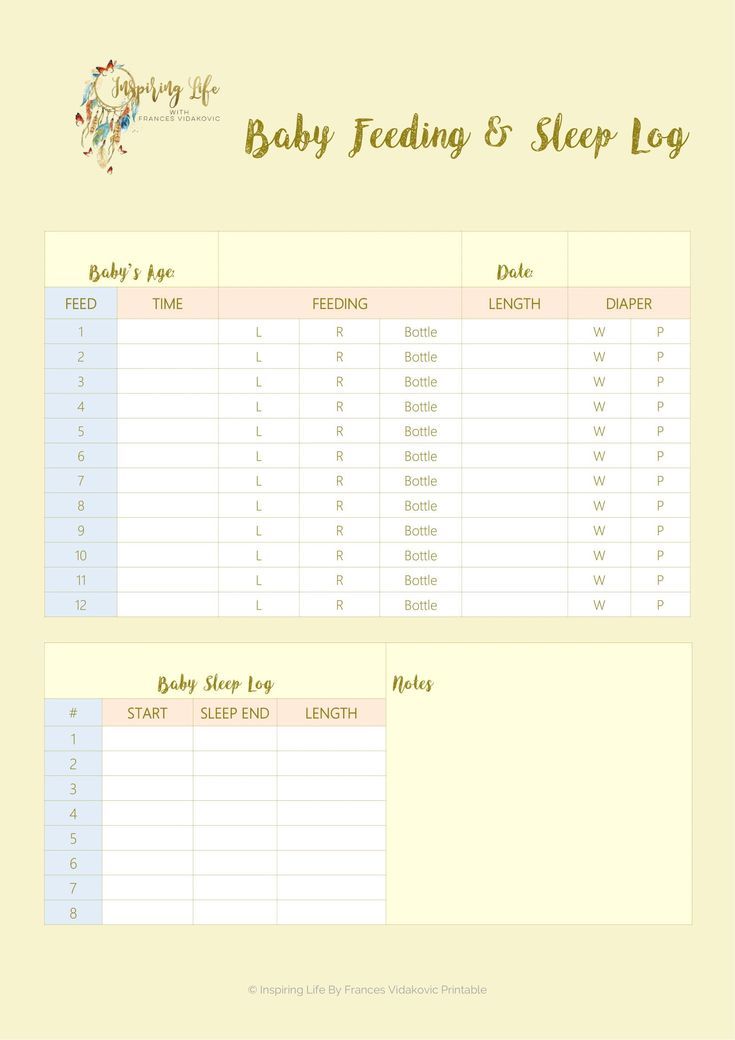
By 6 months: Your baby will consume 6 to 8 ounces (180–240 mL) at each of 4 or 5 feedings in 24 hours.
Formula feeding based on body weight
On average, your baby should take in about 2½ ounces (75 mL) of infant formula a day for every pound (453 g) of body weight. But they probably will regulate their intake from day to day to meet their own specific needs, so let them tell you when they've had enough. If they become fidgety or easily distracted during a feeding, they're probably finished. If they drain the bottle and continues smacking their lips, they might still be hungry.
There are high and low limits, however. If your baby consistently seems to want more or less than this, discuss it with your pediatrician. Your baby should usually drink no more than an average of about 32 ounces (960 mL) of formula in 24 hours. Some babies have higher needs for sucking and may just want to suck on a pacifier after feeding.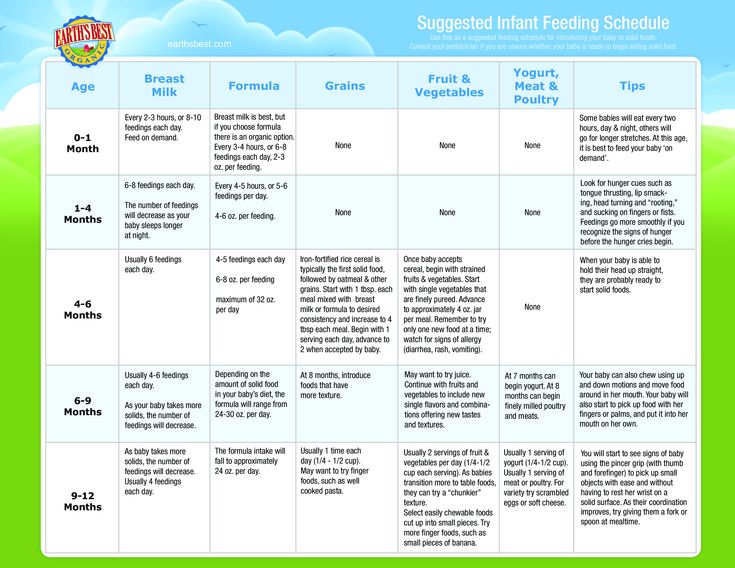
On-demand feeding
Initially it is best to feed your formula-fed newborn a bottle on demand, or whenever they cry with hunger. As time passes, your baby will begin to develop a fairly regular timetable of their own. As you become familiar with their signals and needs, you'll be able to schedule their feedings around their routine.
Eating & sleeping patterns
Between 2 and 4 months of age (or when the baby weighs more than 12 lb. [5.4 kg]), most formula-fed babies no longer need a middle-of-the-night feedings. They're consuming more during the day, and their sleeping patterns have become more regular (although this varies considerably from baby to baby). Their stomach capacity has increased, too, which means they may go longer between daytime feedings—occasionally up to 4 or 5 hours at a time.
If your baby still seems to feed very frequently or consume larger amounts, try distracting them with play or with a pacifier. Sometimes patterns of obesity begin during infancy, so it is important not to overfeed your baby.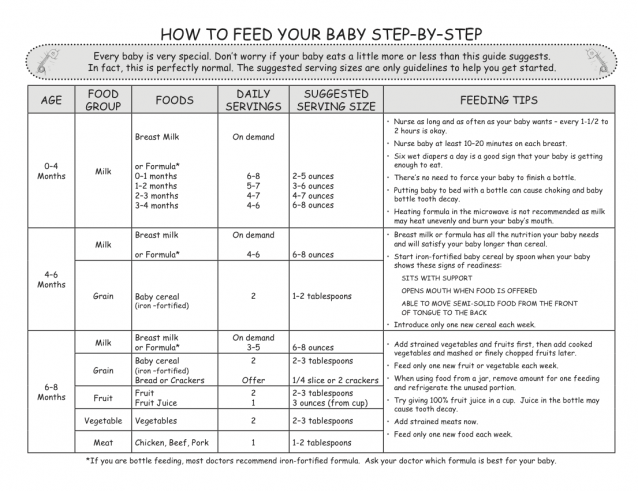
Getting to know your baby's feeding needs
The most important thing to remember, whether you breastfeed or bottlefeed, is that your baby's feeding needs are unique. No book―or website―can tell you precisely how much or how often they need to be fed or exactly how you should handle them during feedings. You will discover these things for yourself as you and your baby get to know each other.
More information
- How Often and How Much Should Your Baby Eat?
- Making Sure Your Baby is Getting Enough Milk
- Is Your Baby Hungry or Full? Responsive Feeding Explained (Video)
- Remedies for Spitty Babies
- Last Updated
- 5/16/2022
- Source
- Adapted from Caring for Your Baby and Young Child: Birth to Age 5 7th Edition (Copyright © 2019 American Academy of Pediatrics)
The information contained on this Web site should not be used as a substitute for the medical care and advice of your pediatrician.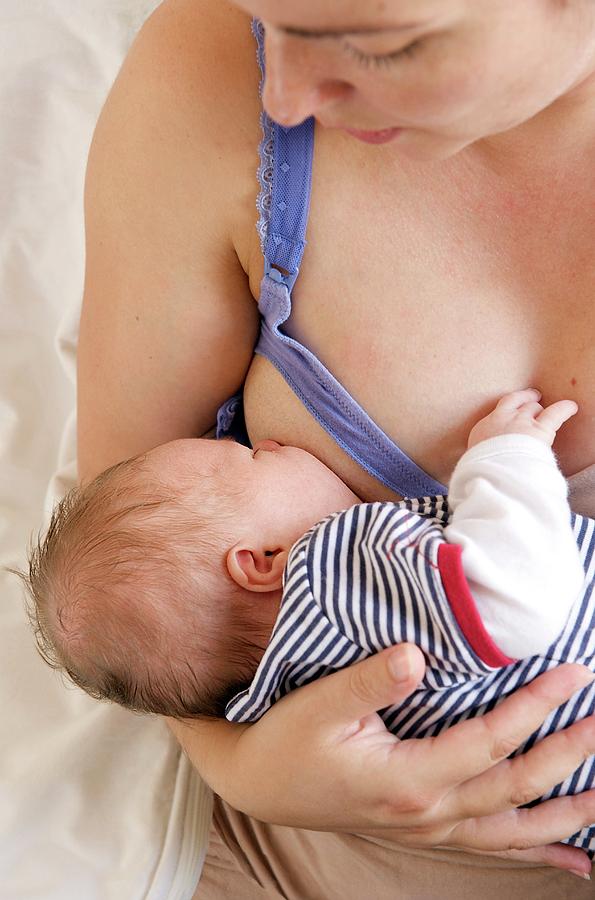 There may be variations in treatment that your pediatrician may recommend based on individual facts and circumstances.
There may be variations in treatment that your pediatrician may recommend based on individual facts and circumstances.
how much milk a child needs for 1 feeding, the rate of formula and breast milk
The birth of a baby is a very joyful event. However, along with the joy of parents, many more questions arise. After all, it is so important that the baby grows up healthy and actively develops. One of the first such questions is usually: "How much does a newborn eat per feeding?" It would seem that feeding is such a natural process that it should not cause difficulties. However, most mothers are concerned that the baby does not have enough milk or, on the contrary, he overeats. How to strike a balance? Let's talk about it in this article.
Content: Hide
- Features of breastfeeding
- On colostrum
- Consumption norms
- How to calculate the volume of feeding
- What is important to take into account artificial feeding
Prevention.
 As a rule, the most difficult in the matter of feeding is the first week after childbirth. At this time, mother and child are only learning to understand each other. But there is no doubt that breast milk is the best food for a baby. This product is perfect by nature and has everything you need at every stage.
As a rule, the most difficult in the matter of feeding is the first week after childbirth. At this time, mother and child are only learning to understand each other. But there is no doubt that breast milk is the best food for a baby. This product is perfect by nature and has everything you need at every stage. Breastfeeding is good for both the baby and the mother:
- it helps the baby to get the substances necessary for growth, development and immunity and just satisfy hunger;
- promotes active contraction of the woman's uterus (under the influence of sucking movements) and a faster recovery process after childbirth.
About colostrum
Newborns eat little, their sucking reflex is just developing and is beginning to be put into practice. In addition, a woman's milk is not produced immediately. In the mammary glands at the end of pregnancy and in the first hours after childbirth, colostrum is formed. This is not exactly milk, it even outwardly differs from mature milk, and in its chemical composition it is similar to blood. This is a very valuable product. It is high in fat and contains immunoglobulins and antitoxins, which strengthen the immune system and protect the baby's body from infections. After a few days, colostrum is replaced by transitional milk. It is lighter, but also quite oily.
This is a very valuable product. It is high in fat and contains immunoglobulins and antitoxins, which strengthen the immune system and protect the baby's body from infections. After a few days, colostrum is replaced by transitional milk. It is lighter, but also quite oily.
Read also: Complementary foods for artificial feeding
Consumption rates
This is important!
A mother should not worry that her baby was hungry, even if she applied it 10 times to the breast, but it seems that he did not eat almost a drop. The size of the stomach of a newborn is very small, so only about 10 ml is eaten per feeding. Thus, for the whole day the baby can drink up to 100 ml.
On average, milk arrives 3-4 days after birth and its quantity gradually increases. The stomach of the baby also grows. This means that the amount of milk consumed also increases. So, for the first day, a newborn can drink 10 ml per feeding, for the second day - 20 ml, and for the third - 30 ml.![]() But remember that each organism is individual and there are no strict limits here. However, if by the 4-5th day of life the child's body weight does not increase, but only decreases (by more than 8%), then this requires the attention of a specialist.
But remember that each organism is individual and there are no strict limits here. However, if by the 4-5th day of life the child's body weight does not increase, but only decreases (by more than 8%), then this requires the attention of a specialist.
There is a folk way to determine the rate of consumption of breast milk. You need to multiply the number of days that have passed since the day of birth by 10. But this method is inaccurate and has no scientific confirmation.
So how much should a newborn eat per feeding? The table shows the daily and one-time volume of milk by months for children under 1 year old.
| Child's age | Molo volume for one feeding (ml) | Milk rate per day (ml) |
| 3-4 days | -60 | 9000 200-300 | 666
| 1 week | 50–80 | 400 |
| 2 weeks | 60–90 | 20 % of body weight |
| 9000 1 month 1 month 1 month 1 months0002 100–110 | 600 | |
| month | 120–1503 | 800 |
9000 3 months | 9000 15000 15000 15000 15000 15000 15000 15000 15000 15000 15000 15000 15000 15000 15000 15000 15000 15000 15000 15000 15000 15000 15000 15000 15000 15000 150000061 | 1/6 body weight | |
| 4 months | 180–210 | |
| 9000 month | 210–24000 9000 9000 9000 9000 9000 9000 | 1/7 body weight |
| 7–12 months | 210–240 | 1/8–1/9 body weight |
do not forget that children with children located breastfeeding, complementary foods are introduced at about 6 months. This means that the amount of milk consumed is reduced, giving way to more adult food.
This means that the amount of milk consumed is reduced, giving way to more adult food.
How to calculate the amount eaten
In terms of measuring the amount eaten, formula feeding seems to be just perfect. Here is a bottle with a scale, here is water, here is a measuring spoon. However, in terms of its benefits, formula milk will never be compared with breast milk. And besides, making measurements is not as difficult as it seems at first glance. Babies just need to be weighed before and after feeding on a baby scale. To ensure the accuracy of the result, you need to weigh several times a day. If nothing threatens the health of the baby, he does not look thin and pale, develops according to age, and the mother has enough milk, then monthly weighing in the clinic is usually enough.
Feeding schedule
For breastfed babies, there is a rule - to put the baby to the breast on demand. Previously, it was believed that it was necessary to maintain an interval of 3 hours, but now pediatricians agree that the breaks between feedings can be 1. 5–2 hours. This does not mean at all that the baby will overeat.
5–2 hours. This does not mean at all that the baby will overeat.
Video: Does a child get enough food in the first months of life?
Author: pediatrician, Ph.D. Komarovsky E.O.
The duration of one feeding is usually 15-30 minutes. Although there are deviations from the norm. For example, a woman has a lot of milk, and the child is full in 5-10 minutes. Or, on the contrary, there is not enough milk, and the baby can suck out the remains for a long time. Some babies just enjoy suckling and use their mother's breast as a pacifier.
What is important to consider
At first, mother and baby are just getting used to the ongoing changes, so the feeding regimen may not be ideal. However, you should adhere to the following rules.
- In the first couple of weeks, a woman needs a lot of dedication, because the interests of the child in the matter of satisfying hunger come to the fore.
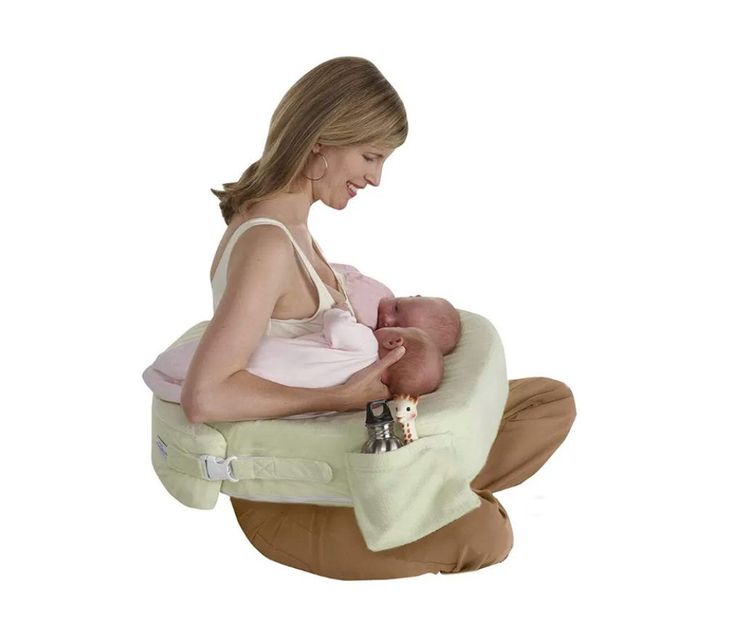 You can’t refuse food to a baby, even if it costs a sleepless night.
You can’t refuse food to a baby, even if it costs a sleepless night. - If there is any doubt that the baby is undernourished or overeating, it is best to start monitoring the frequency of feedings. So, you need to mark the time at which the baby was really hungry, mark the intervals between feedings. This information may also be useful at the appointment with the pediatrician.
- It is impossible to establish a clear feeding regime, as with artificial feeding, especially in the first weeks after birth. Maintaining intervals of more than 2–3 hours during the day and 3–4 hours at night is highly discouraged.
- Do not try to force feed your baby. He is still too young to realize the need for food, and is guided solely by his feeling of hunger. If the baby persistently refuses the breast, you need to try to offer him to eat a little later. If the interval is too large, it is better to contact a specialist for advice.
- It is important that your baby latch on correctly.
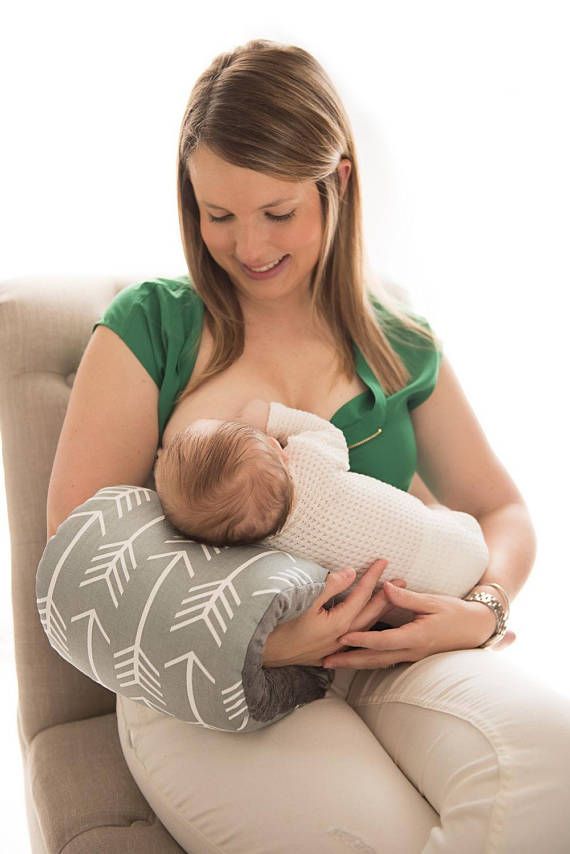 His mouth should capture not only the nipple, but also the areola. Thus, the milk will properly enter the mouth, and the woman will reduce the risk of cracked nipples.
His mouth should capture not only the nipple, but also the areola. Thus, the milk will properly enter the mouth, and the woman will reduce the risk of cracked nipples. - Soothers and bottles are not recommended for breastfed babies. Such products can reduce the intensity of sucking movements.
- It is best to give your baby only one breast at a time. In the mammary gland, fore milk is formed, with which the baby quenches his thirst, and hind milk, with which he "eats up", since it is more nutritious in composition.
- Hold the baby upright for about 10 minutes after each feed. This helps to free the tummy from air and excess milk.
As a rule, with a normal feeding regimen and a sufficient amount of milk from the mother, by the month the weight of the child increases by 500–600 g. Now consider the situation when the mother does not have the opportunity to breastfeed the baby. In this case, it is necessary to choose a quality milk formula that will cover the nutritional needs.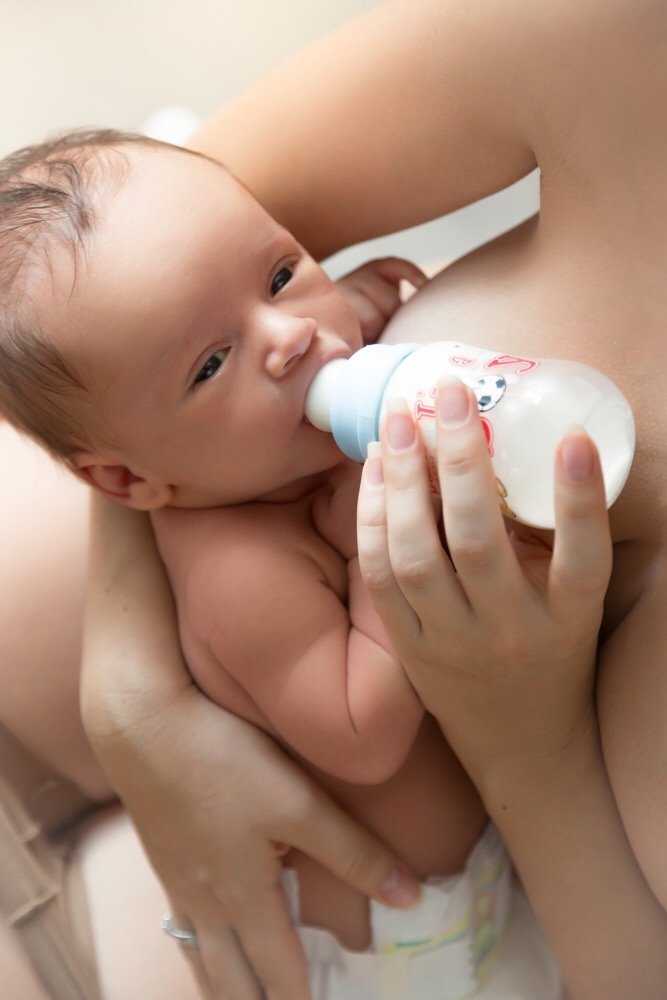 The pediatrician should help in this matter. The doctor will always take into account the peculiarities of the child's health and will be able to advise a regular or medicinal product. Do not forget that when breastfeeding, the baby makes more effort. He drinks milk gradually and feels full. When feeding with a formula, a strict dosage is needed, since usually saturation does not come immediately, and the baby may require a supplement that he does not really need (the feeling of hunger should disappear after a few minutes).
The pediatrician should help in this matter. The doctor will always take into account the peculiarities of the child's health and will be able to advise a regular or medicinal product. Do not forget that when breastfeeding, the baby makes more effort. He drinks milk gradually and feels full. When feeding with a formula, a strict dosage is needed, since usually saturation does not come immediately, and the baby may require a supplement that he does not really need (the feeling of hunger should disappear after a few minutes).
Consumption rates
Almost all known mixtures require 8 or 7 meals a day with an interval of 3 hours. Night feedings are also included. When the baby grows up a little, it will be possible to skip them and sleep 5-6 hours until morning. With regard to formula milk, the principle of feeding on demand is not suitable. Therefore, it is necessary to observe both the dosage indicated by the manufacturer and the regimen.
It will not be difficult to calculate how much the baby eats for feeding.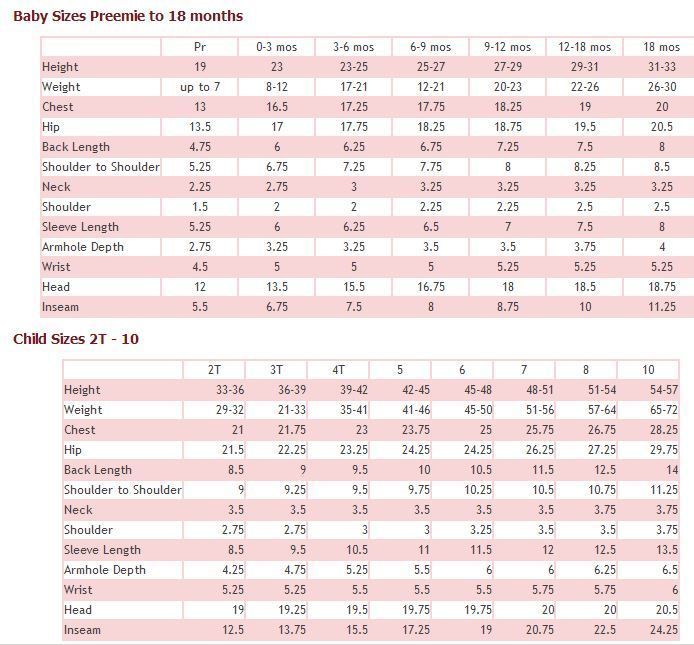
| Age | Daily milk rate from body weight |
| 10 days - 1.5 months | 9000 1/5 | 9000 9000 1.5–4 months | 1/6 |
| 4–6 months | 1/7 |
| 6–8 months | 1/8 |
| 9000 8 months - 1 year 9000 | 1/9 |
For example, a baby is 2 months old and weighs 4800 grams. According to the table, we divide 4800 by 6 and get the daily rate - 800 ml of milk formula per day. To calculate the volume of one feeding, divide 800 by 6 (number of feedings per day). Thus, the child eats about 130 ml of formula at a time.
Not everyone can find the right mixture right away, but do not despair. Even with allergies, digestive problems, cow's milk protein intolerance, you can find a suitable product, but only under the strict supervision of a doctor.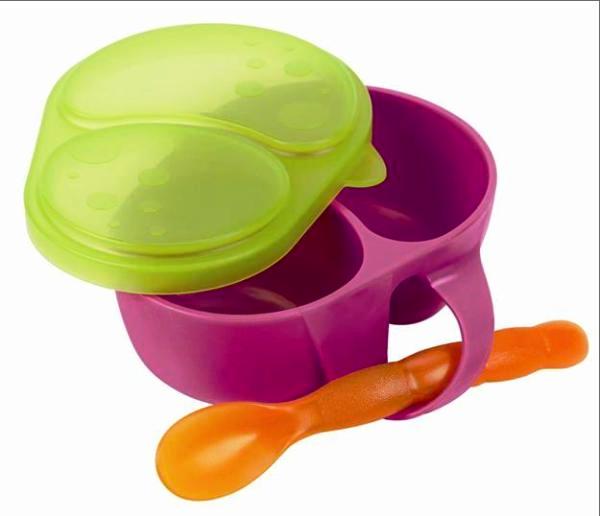
#Nutrition for babies
Correct bra size for breastfeeding mothers | Tips for pregnant women
During pregnancy, your body changes and prepares for breastfeeding, so it is especially important to choose the right supportive bra for pregnant and nursing mothers.
Share this information
Benefits of different types of bras for pregnant and nursing mothers
Wearing a bra that is too tight is hardly pleasurable. But it is quite difficult to predict how the breasts will change during pregnancy and after childbirth: the body of each woman is unique and changes in different ways. For some, breasts increase by just one size, while for someone it can grow by three sizes or even more. Therefore, it is recommended to wear bras and tank tops with well-designed cuts that can adapt to changes in body shape and provide you with constant comfort.
During the day, it's best to wear a comfortable, seamless nursing bra with no wires but support.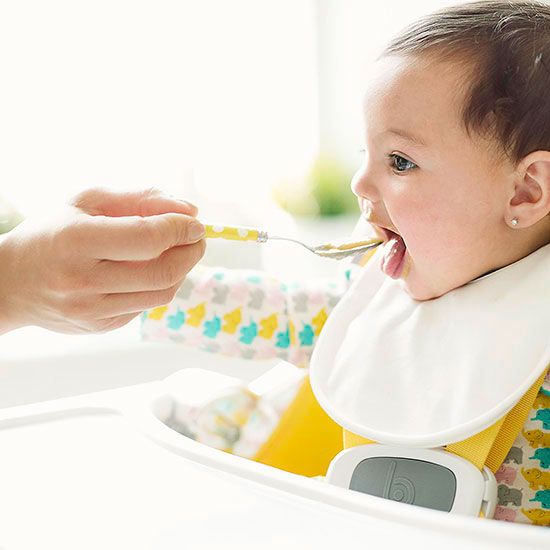 Such a bra can be worn even during pregnancy, when your regular bras become too small for you. During the breastfeeding period, it is good to use bras with detachable cups so that you can feed your baby simply and discreetly.
Such a bra can be worn even during pregnancy, when your regular bras become too small for you. During the breastfeeding period, it is good to use bras with detachable cups so that you can feed your baby simply and discreetly.
Wear a comfortable, breathable sleep bra at night to keep your bra pads in place and make breastfeeding easier.
How to choose the size of a nursing bra?
When choosing a bra, the most important thing is to measure your breasts correctly. This can be done at home in comfortable conditions or in a store with the help of a specialist. Every woman is unique, so measurement is the very first and most important step.
Once you have decided on your size, try on the bra to make sure you feel comfortable in it. At the same time, you can check whether the fasteners and detachable cups of the bra are comfortable, whether its shape and quality of the material suits you, how well it supports the chest, whether it is invisible under clothes, and so on.
Check whether it is convenient to unfasten the fasteners of the bra with one hand. This is important because you will have to unfasten and fasten them with one hand all the time - with the other you will hold the child.
Bra Calculator
Step one:Measure around the fullest part of your bust, making sure the tape measure is flat and not twisted. Enter results (in cm) here: |
Step two:Measure the circumference of the body under the bust. Make sure the measuring tape fits evenly around the circumference. Enter results (in cm) here: |
Every woman is unique and Medela thinks about each one. If you cannot find your size in the Medela chart, we recommend choosing the size closest to your measurements.
Remember that every woman is unique, so size is just a guideline.


